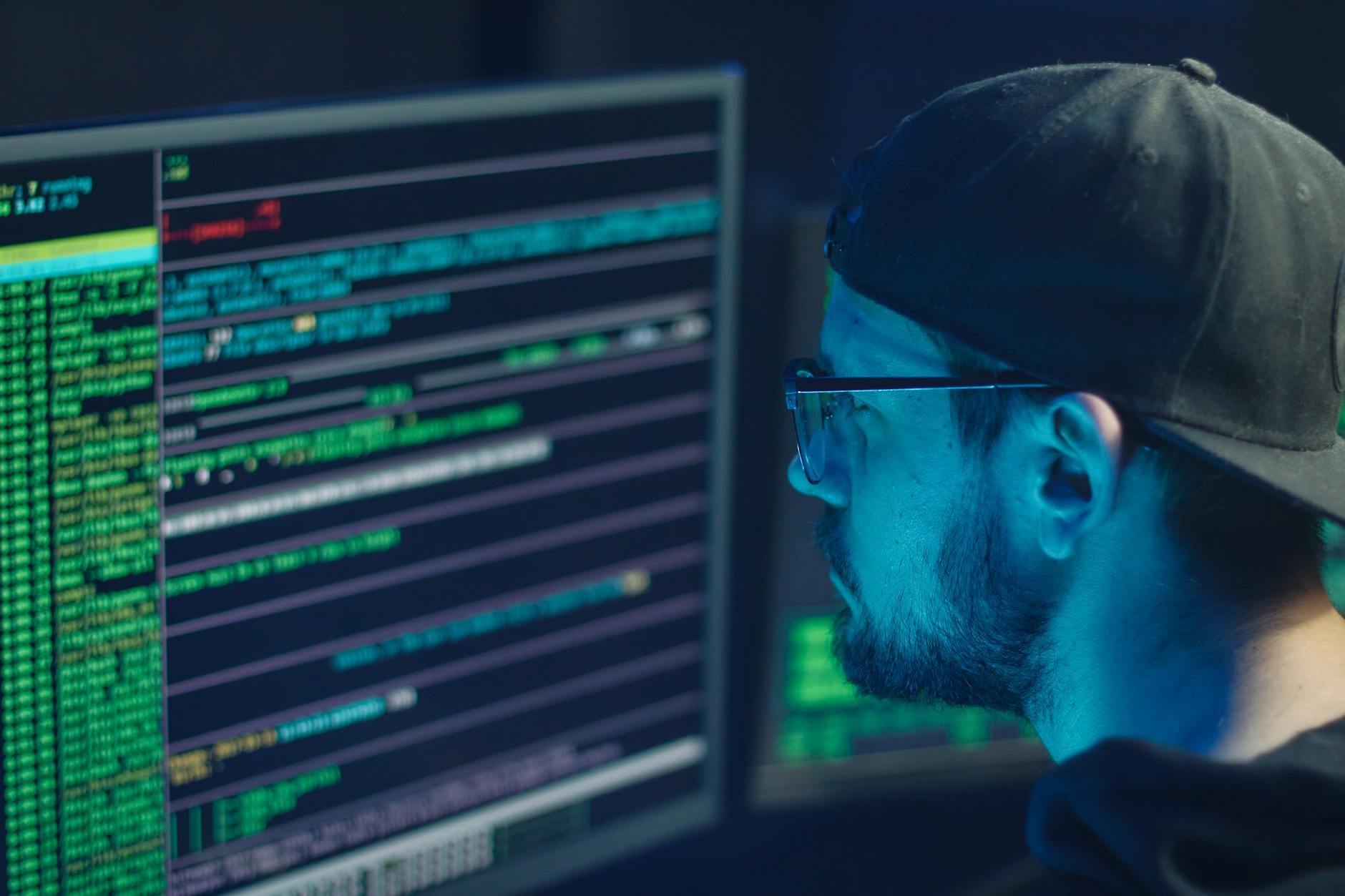Trump Crypto Empire Scales Up: $1.5 Billion Deal Signals Major Ambitions in Digital Assets
A publicly traded tech firm’s massive share sale aims to fuel a Trump-controlled cryptocurrency, raising questions about financial strategy and the future of digital assets.
The burgeoning world of cryptocurrency has a new titan, or at least the ambition for one. A significant development is unfolding in the digital asset space as World Liberty Financial (WLF), a company under the control of the Trump family, has announced a colossal $1.5 billion deal involving the sale of shares by publicly traded tech firm ALT5 Sigma. This complex transaction is set to inject substantial capital into WLF’s cryptocurrency endeavors, signaling a bold move by the Trump organization to solidify its presence and influence in the rapidly evolving digital economy. The sheer scale of the investment immediately positions this venture at the forefront of crypto-related financial dealings, raising both eyebrows and significant questions about its implications for the market, investors, and the broader financial landscape.
At its core, the agreement entails ALT5 Sigma, a technology provider known for its digital asset solutions, selling $1.5 billion worth of its shares. The proceeds from this massive share offering are earmarked for a singular, defining purpose: the acquisition of a cryptocurrency meticulously created and controlled by World Liberty Financial. This strategic move is not merely a financial transaction; it represents a concerted effort to leverage the Trump name and brand within the lucrative and often volatile cryptocurrency market. The implications of such a substantial infusion of capital into a Trump-controlled digital currency are far-reaching, touching upon issues of market regulation, investor confidence, and the potential for a powerful new player to emerge in the decentralized finance (DeFi) ecosystem.
Context & Background
To fully appreciate the magnitude and potential impact of this $1.5 billion deal, it’s crucial to understand the players involved and the broader market context in which this transaction is taking place. World Liberty Financial, while perhaps less known to the general public than other major financial institutions, operates within a strategic niche, aiming to bridge traditional finance with the burgeoning world of digital assets. The Trump family’s involvement brings a unique and undeniable brand recognition, a factor that has historically translated into significant market sway in various industries. This affiliation suggests an intent to harness that influence to drive adoption and investment in their digital currency.
ALT5 Sigma, on the other hand, is a company that has established itself as a provider of technology infrastructure for the digital asset industry. Its expertise lies in developing platforms and solutions that facilitate the creation, trading, and management of digital assets. By agreeing to sell a substantial amount of its shares to fund the acquisition of WLF’s cryptocurrency, ALT5 Sigma is not just securing a significant financial transaction; it is positioning itself as a key technological enabler for this ambitious Trump-backed venture. This partnership suggests a symbiotic relationship where ALT5 Sigma’s technological capabilities are married with the market-reaching power of the Trump brand.
The cryptocurrency market itself is a dynamic and often unpredictable landscape. In recent years, digital currencies have moved from the fringes of technology to the forefront of global financial discussion. Major corporations are exploring blockchain technology, institutional investors are increasingly allocating capital to crypto assets, and governments worldwide are grappling with how to regulate this new frontier. Within this context, the entry of a well-known political family like the Trumps into the digital currency space is a significant event. It carries the potential to attract both a surge of new investors, drawn by the brand recognition, and a heightened level of scrutiny from regulators and market watchdogs, concerned about market manipulation and consumer protection.
Previous forays by public figures into the cryptocurrency space have yielded mixed results. Some have been lauded for innovation and accessibility, while others have faced criticism for over-promising and under-delivering, or for being perceived as opportunistic cash grabs. The Trump family’s history in business, while marked by significant successes, has also seen its share of controversies and legal challenges. Therefore, this $1.5 billion cryptocurrency deal is not happening in a vacuum; it is unfolding against a backdrop of public skepticism, evolving regulatory frameworks, and a fervent desire within the crypto community for legitimate, robust projects that can withstand market volatility and scrutiny. The success or failure of this venture could have ripple effects across the broader digital asset market, influencing investor sentiment and the perception of celebrity-backed crypto initiatives.
In-Depth Analysis
The $1.5 billion agreement between ALT5 Sigma and World Liberty Financial is a multi-faceted transaction with profound implications. The core of the deal lies in ALT5 Sigma’s capital raise through a substantial share sale. This is a common mechanism for tech companies to acquire assets or fund growth, but the sheer volume here, coupled with the specific target—a Trump-controlled cryptocurrency—makes it exceptionally noteworthy. The capital raised will be used by ALT5 Sigma to acquire the cryptocurrency created by World Liberty Financial. This means ALT5 Sigma, a publicly traded entity, will essentially become the custodian or primary holder of this digital asset, effectively integrating it into its corporate structure and potentially making it available through its technological platforms.
The strategic rationale behind such a move is likely a two-pronged approach. Firstly, for World Liberty Financial, it provides an immediate and significant influx of capital, validating their cryptocurrency and providing the resources for further development, marketing, and market penetration. The Trump name provides an unparalleled marketing advantage, tapping into a vast and loyal base of supporters who might be more inclined to engage with and invest in a product bearing the Trump brand. This can translate into rapid user acquisition and a substantial initial market capitalization for the digital coin.
For ALT5 Sigma, the acquisition of a Trump-backed cryptocurrency offers a unique product to its portfolio. As a technology provider, offering a prominent and heavily marketed digital asset can significantly boost its own visibility and attract a new segment of users to its platforms. It’s a strategic pivot that could transform ALT5 Sigma from a behind-the-scenes tech provider into a direct participant in the digital asset market, leveraging a powerful brand to its advantage. The success of this integration hinges on ALT5 Sigma’s ability to effectively manage, secure, and promote the digital currency, as well as its capacity to maintain regulatory compliance while navigating the complexities of the cryptocurrency ecosystem.
The valuation of the cryptocurrency itself is a critical component of this deal that warrants careful scrutiny. How was the $1.5 billion figure arrived at? Is it based on a robust valuation of the underlying technology, the projected utility and adoption of the coin, or is it significantly influenced by the brand associated with it? In the crypto world, valuations can often be speculative, driven by hype and market sentiment rather than tangible fundamentals. Investors in ALT5 Sigma will be keenly interested in the intrinsic value of the purchased digital asset and whether this $1.5 billion valuation is sustainable in the long term, especially given the inherent volatility of cryptocurrencies.
Furthermore, the legal and regulatory implications are immense. The involvement of a former U.S. President and his family in a substantial cryptocurrency transaction will inevitably attract the attention of financial regulators such as the Securities and Exchange Commission (SEC) and potentially other bodies concerned with financial markets and consumer protection. The creation and sale of cryptocurrencies can be subject to securities laws, and any misstep in compliance could lead to significant legal challenges and penalties. The structure of the deal—whether the cryptocurrency is classified as a security, a commodity, or something else entirely—will be crucial in determining the regulatory framework that applies. The transparency of the tokenomics, the distribution mechanism, and the governance of the cryptocurrency will all be under intense scrutiny.
Pros and Cons
This ambitious $1.5 billion cryptocurrency deal presents a compelling mix of potential benefits and significant risks, both for the companies involved and for the broader market.
Potential Pros:
- Brand Amplification and Market Reach: The Trump name carries immense brand recognition. This can dramatically accelerate awareness and adoption for World Liberty Financial’s cryptocurrency, potentially attracting a large base of users and investors who are drawn to the association.
- Capital Infusion and Development: The $1.5 billion from ALT5 Sigma provides substantial capital for World Liberty Financial to develop its cryptocurrency, enhance its blockchain technology, build out its ecosystem, and fund marketing initiatives. This level of funding can significantly accelerate project development.
- Legitimization of Digital Assets: A high-profile venture like this, backed by significant capital and a recognizable brand, could contribute to the broader legitimization of cryptocurrencies and blockchain technology, attracting mainstream attention and potentially broader institutional acceptance.
- Technological Integration: ALT5 Sigma’s expertise in digital asset solutions means the cryptocurrency could be integrated into robust and scalable technological platforms, potentially offering a more user-friendly and secure experience for holders.
- Economic Opportunity: For those who invest in the cryptocurrency or are involved in its ecosystem, there’s the potential for significant financial returns if the asset performs well, creating new economic opportunities.
Potential Cons:
- Valuation and Speculation Risk: The $1.5 billion valuation of the cryptocurrency could be heavily influenced by brand association rather than intrinsic value, making it susceptible to speculative bubbles and subsequent crashes. If market sentiment shifts, the value could plummet.
- Regulatory Scrutiny and Compliance: The involvement of a prominent political family will undoubtedly attract intense scrutiny from financial regulators. Any perceived non-compliance with securities laws or market manipulation could lead to severe penalties, impacting both WLF and ALT5 Sigma.
- Market Volatility: The cryptocurrency market is inherently volatile. Even with strong backing, the digital coin will be subject to the unpredictable swings of the broader crypto market, posing significant risk to investors.
- Brand-Dependent Success: The success of the venture may be disproportionately reliant on the Trump brand. Any negative sentiment or controversy surrounding the brand could directly and adversely affect the cryptocurrency’s performance and adoption.
- Investor Protection Concerns: Critics may raise concerns about whether all investors fully understand the risks involved, especially if the marketing heavily relies on the celebrity endorsement aspect rather than transparent disclosure of technological underpinnings and risks.
- Execution Risk: Despite significant funding, the successful development and widespread adoption of a new cryptocurrency are complex undertakings. There are inherent execution risks in building out the necessary infrastructure, partnerships, and user base.
Key Takeaways
- ALT5 Sigma, a publicly traded tech firm, is set to sell $1.5 billion in shares.
- The capital raised will be used to acquire a cryptocurrency controlled by World Liberty Financial (WLF).
- The Trump family controls World Liberty Financial, bringing significant brand recognition to the venture.
- This deal represents a major capital injection into a Trump-backed cryptocurrency project.
- The transaction will likely face intense scrutiny from financial regulators due to the prominent figures involved.
- The success of the cryptocurrency will be closely watched as a test case for celebrity-endorsed digital assets.
- Investor confidence in ALT5 Sigma will be tied to the perceived value and long-term viability of the acquired cryptocurrency.
Future Outlook
The future trajectory of this $1.5 billion cryptocurrency deal is subject to a multitude of factors, ranging from market reception and technological execution to regulatory developments and the continued influence of the Trump brand. If executed successfully, this venture could indeed carve out a significant niche in the digital asset space, attracting a substantial user base and potentially influencing the direction of other celebrity-backed crypto projects. The integration of ALT5 Sigma’s technology could provide a solid foundation for the digital currency, making it more accessible and functional for a broader audience.
However, the path forward is fraught with challenges. The cryptocurrency market is incredibly competitive, with established players and innovative new projects constantly vying for attention and investment. Maintaining value and fostering organic growth beyond the initial hype will be paramount. The regulatory landscape is also a major unknown; any adverse rulings or increased compliance burdens could significantly hamper the project’s momentum. Furthermore, the long-term sustainability of a cryptocurrency heavily reliant on a single brand is questionable. Market sentiment can shift, and future political developments could impact the brand’s appeal and its ability to drive consistent support.
ALT5 Sigma’s role as a technological backbone is critical. Their ability to innovate, ensure security, and adapt to evolving blockchain standards will be key determinants of the cryptocurrency’s success. If they can create a robust and user-friendly platform that supports the digital asset effectively, it will lend credibility to the entire endeavor. Conversely, any technical glitches, security breaches, or failure to scale could quickly erode investor confidence.
Ultimately, this deal is a high-stakes gambit. It reflects a growing trend of prominent figures and established businesses entering the crypto space, seeking to capitalize on the perceived future of finance. The outcome will serve as a significant case study, offering valuable insights into the viability of deeply integrated, brand-driven cryptocurrency projects and the complex interplay between celebrity, technology, finance, and regulation in the digital age. The world will be watching to see if this massive investment translates into a lasting digital asset or becomes another cautionary tale in the volatile history of cryptocurrencies.
Call to Action
For investors considering an involvement with ALT5 Sigma or the World Liberty Financial cryptocurrency, thorough due diligence is not merely advisable; it is essential. Understand the inherent volatility of digital assets and the specific risks associated with brand-dependent projects. For those interested in the broader implications for the financial markets and the regulation of digital currencies, engaging with reputable financial news sources, academic research, and regulatory announcements will provide a more comprehensive understanding of this evolving landscape. The development of this venture underscores the need for informed participation and a critical approach to all financial undertakings in the digital asset space.








